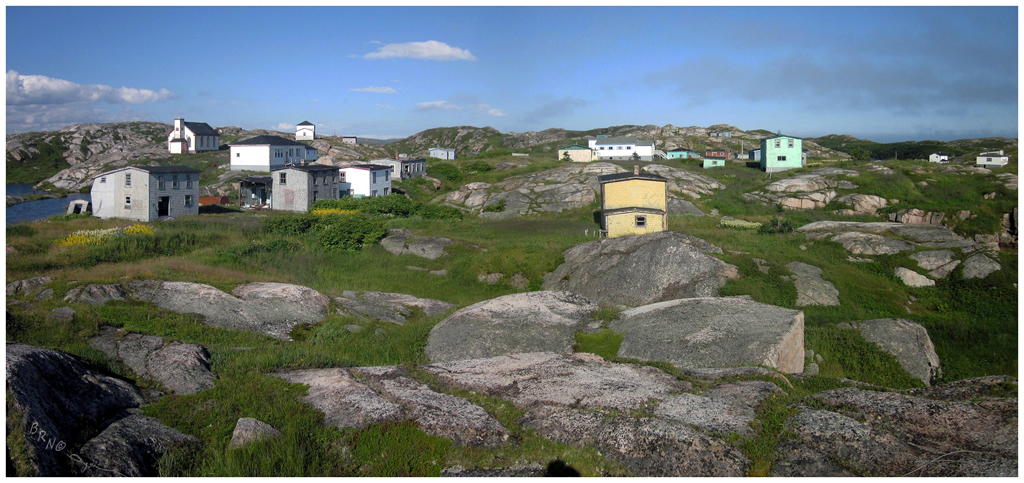
(The following is an explanation of resettlement in Newfoundland. I've covered this before, so feel free to skip this part if you remember.)
Newfoundland has always had a fishing-based economy. As the Europeans came over to this land, hundreds of settlements popped up along the coast wherever there was a decent harbour and some (relatively) flat land for a few clapboard structures. At the midpoint of the last century, the coastline of Newfoundland - an island covering the same area as Tennessee - was home to approximately 1100 communities.
New technology would come & eventually these outport towns would want to be connected to the road network, telephone & electrical grid. The Premier at the time, stated that many of these places had no great future & that they should be relocated in his resettlement program. The program started in 1954 and if everyone in a community agreed to resettle, then the government would give each family $600 to move away. This would allow the government to cut services to the old community. Between 1954 & 1965, 110 communities with 7000 people were resettled.
The program would change in 1965 to pay ~$4500 if you moved to a 'development centre' (a larger city where they wanted people to congregate). It also no longer needed the whole community to agree: if a vote was held and 80% of the community voted to resettle, well then, you'd resettle. The new program resulted in another 148 communities being abandoned, and 20 000 people relocating between 1965 and 1978.
By the late 1970s, the program wasn't being pushed by the government anymore. Many of the people who had resettled weren't happy with the results. The promise of jobs & a better life in the 'development centres' didn't come to all of the re-settlers.

Although the program wasn't being peddled to citizens anymore, it was still there if people asked to be resettled.
For example, I know of a Great Harbour Deep which was resettled in 2002. Another community was resettled in 2003 & the government made their money back in 3 years, since they no longer had to maintain the northern Newfoundland road to the outport. Grand Bruit was resettled just last year & there have been arguments about another resettlement which was supposedly agreed upon just a few weeks ago.
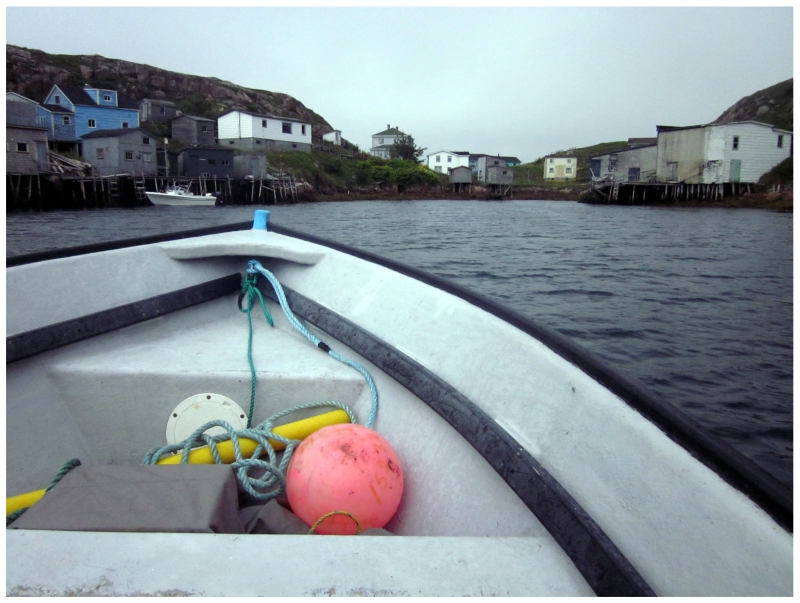
Today I was going to a community which was resettled about a decade ago.
Having met Johan the previous weekend, he knew a few people on this coast because he had been shooting pictures here last year. It was hilarious to be driving around with a Scotsman & have him know random people in a small Newfoundland fishing village. It was also fortuitous because he knew people with boats or connections to people with boats.
And so it was; we thankfully caught the fisherman we were looking for, and he was willing to bring us over to the resettled community before his dinner.
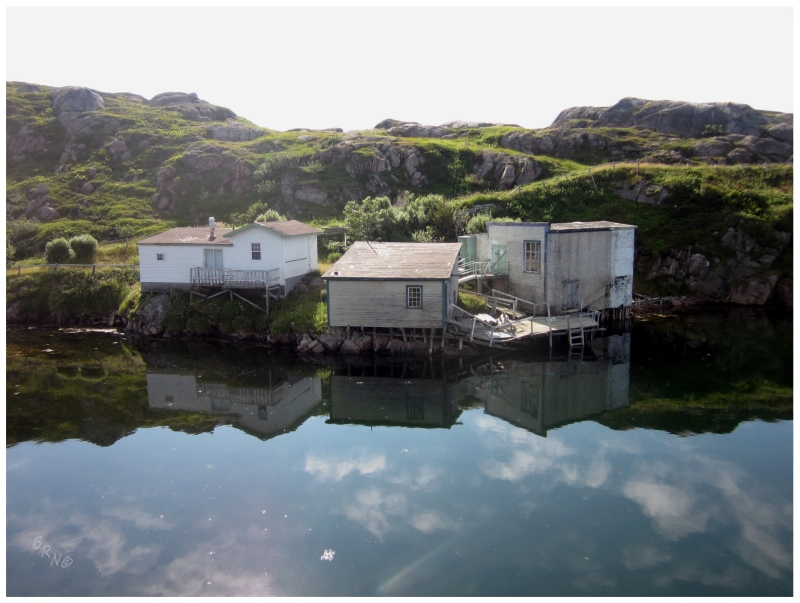
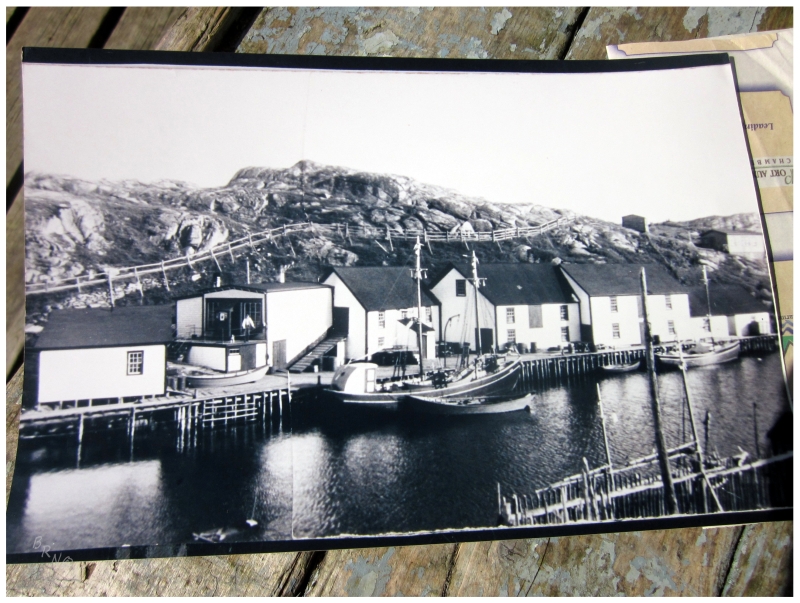
Coasting into the harbour, our fisherman tied up his boat & we stood on the docks for a bit. He was one of the people who voted against resettlement & said that he'd still vote against it to this day. He didn't want to leave his home.
He pulled out a file folder he had brought & started showing us old pictures, news articles & letters from people who he had brought over here in the past (people who had ancestors from this community).
One of the fisherman's pictures is above & you'll notice that only 2 of those buildings still stand if you compare it to the modern day picture. The buildings were all part of a trading company for the catches of the local fishermen. I studied the old picture in amazement - as I never envision these places to be much more than what I see when I personally visit. It was impressive that they once had such a large operation, crazy that it was now mostly washed into the harbour. I suppose this community did have 300 people at one time - and it has been a strong community all the way back to the 1800s - so it really shouldn't surprise me so much.
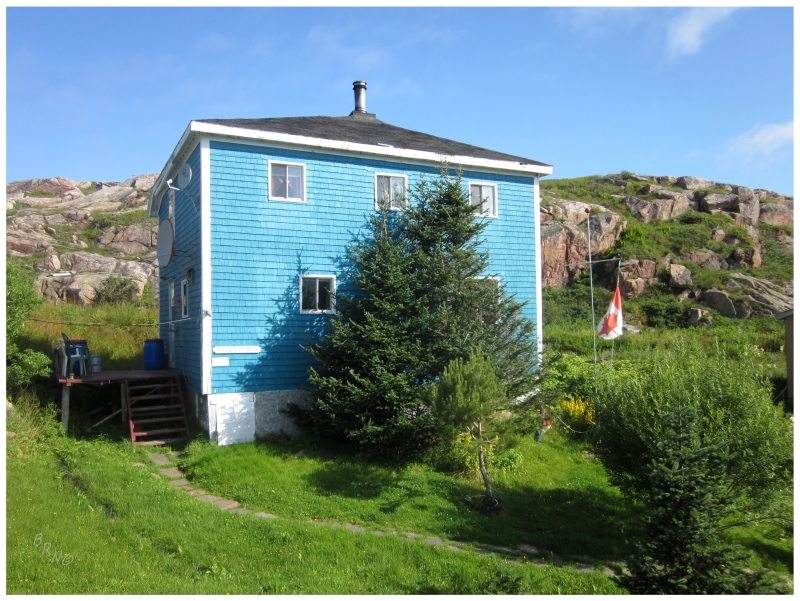
The fisherman invited us into his well-maintained house for a bit. He was a short man & I imagine he came from a stock of other short men as I was whacking my head on every doorframe, marveling at how short most of them (the doorways) were (a 5 and a half foot doorway?!?).
We shot the shit for a bit longer, talking about the cat scratching post & asking about the cat coming over in his boat (apparently the cat was perfectly content with the sea). The fisherman then gave us the only beverage he had & apologized for only having wine spritzer things, but he had already done more than enough.
He had to get home for supper & wished us luck/told us to be safe.
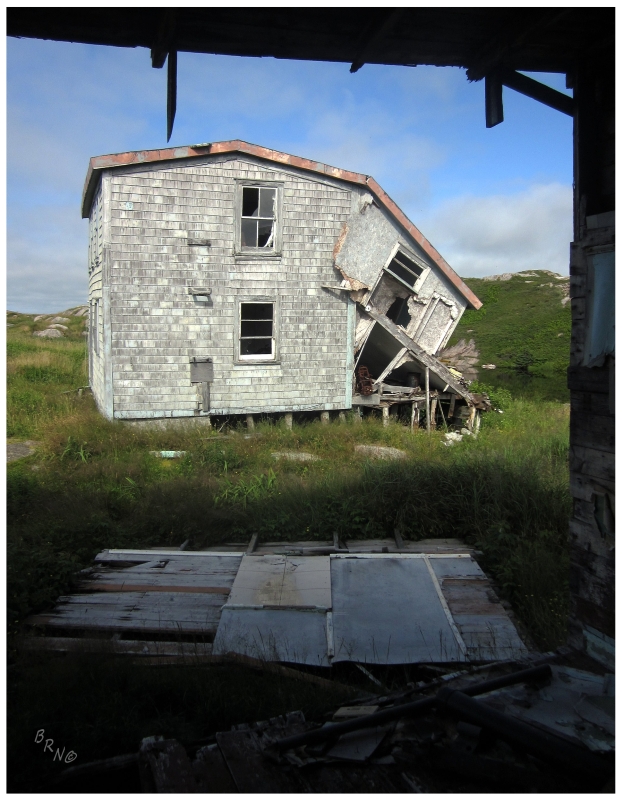
Johan doesn't go into buildings for a hobby, so I figured that he'd be slow & cautious. He showed me my place though, as he tackled the first few buildings quickly and was clearly capable of exploring on his own.
(Not being a prick by leaving him behind here. We're both photographers0, so we'd just get in each other's way while exploring house after house after house.)
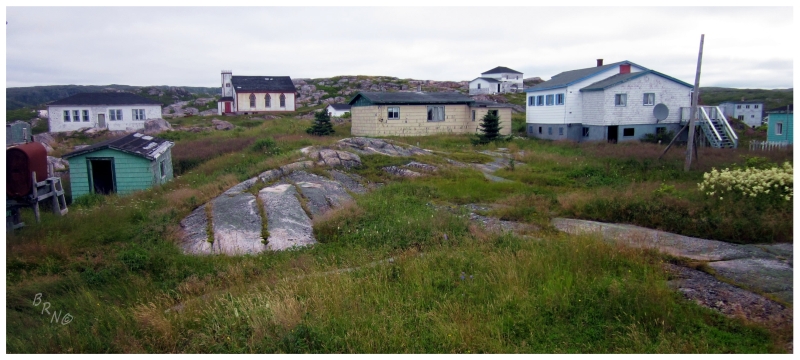
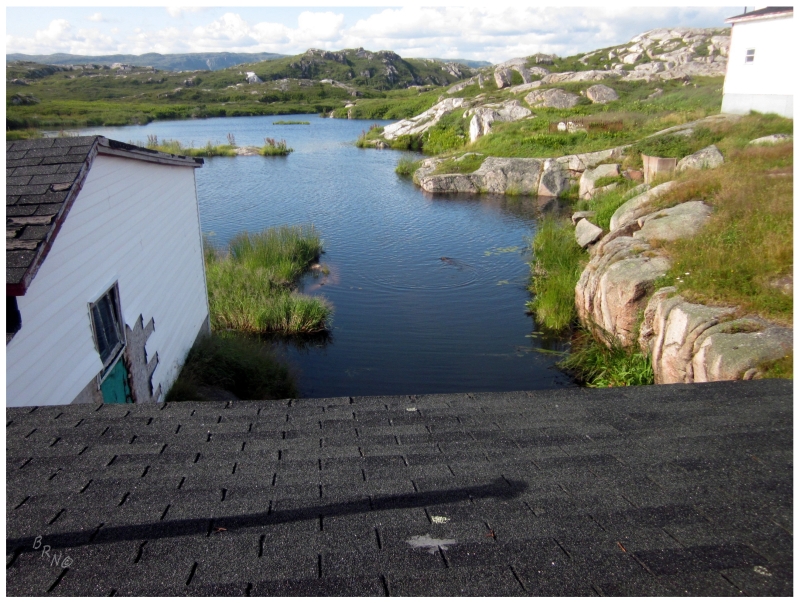
One of the first things I did was move through the whole town to make sure no one was here & that we truly had it to ourselves.
After walking past 8 or 9 empty houses, I was satisfied that I could stay excited with being out here alone. I walked into a house & climbed out of a second story window to survey the surroundings and bask in the midday sun. A muskrat was swimming in the town pond towards the house, but finally saw me & promptly 180'ed it back to his female companion (the circular wave in the above picture is the muskrat's).
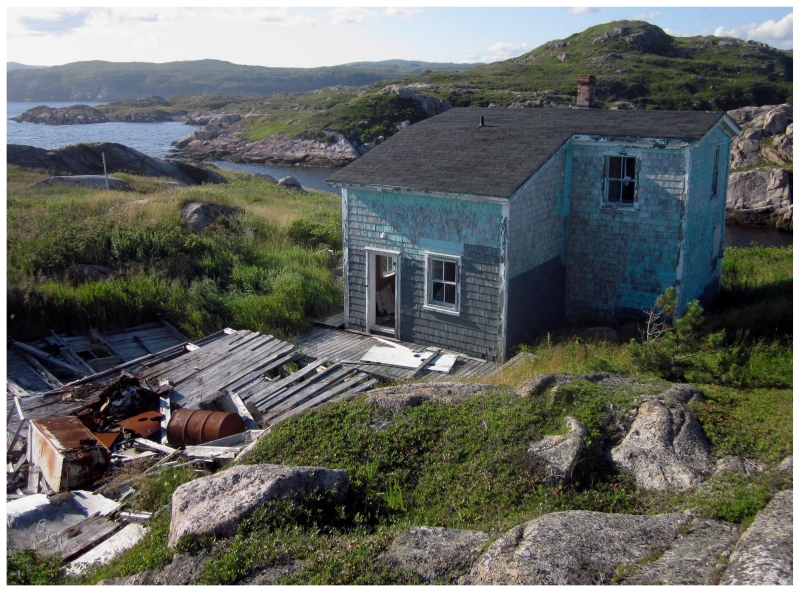
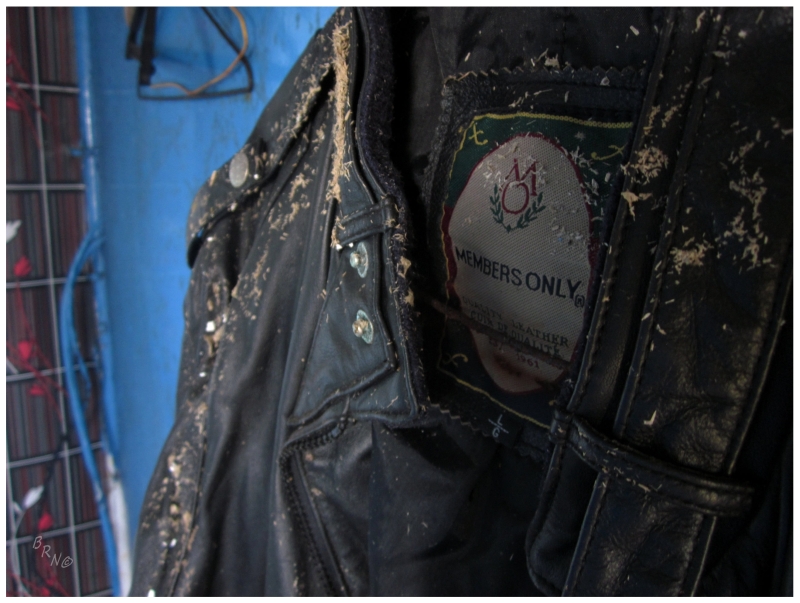
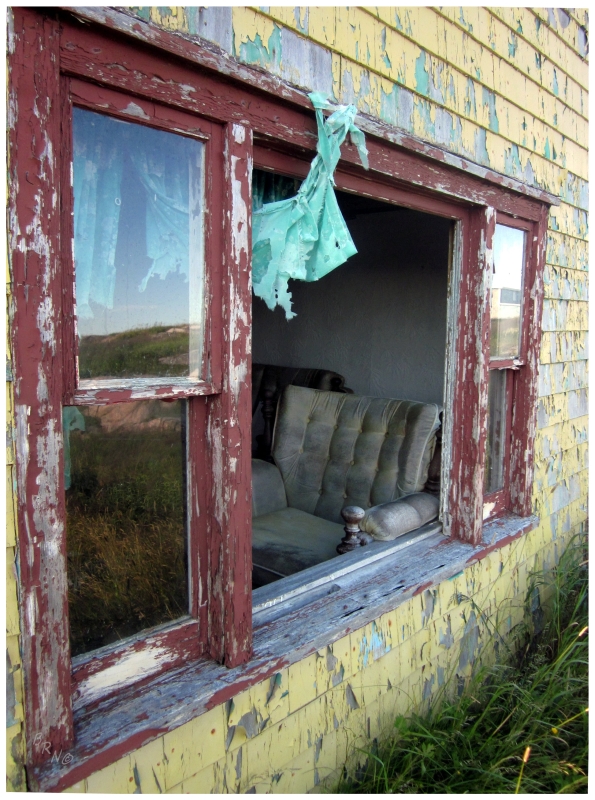
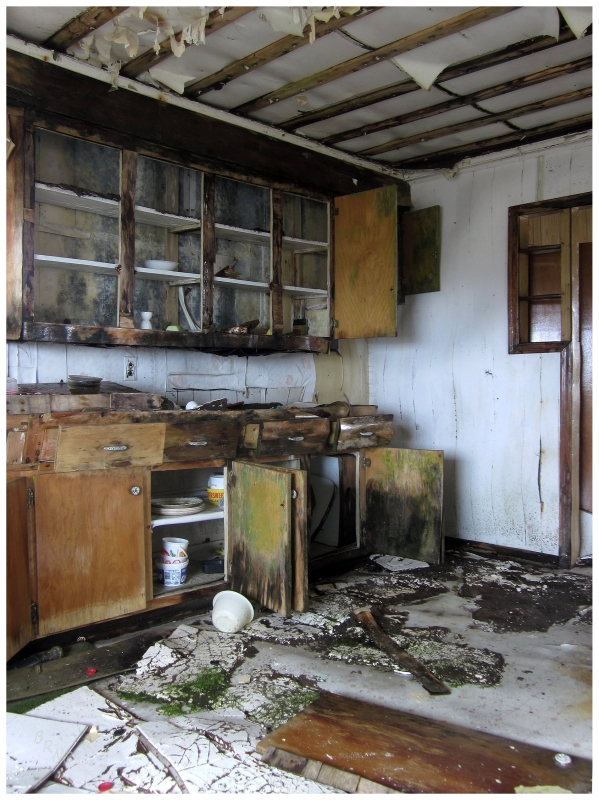
Some of the houses were clearly abandoned since 2000 (or earlier). Of the really ramshackle ones I first went into, I braved penetration and pushed the limits in terms of soft flooring & sketchy stairs. As the day progressed though, I started to pass on the more sketchy upper floors, since I had grown tired & seen enough upstairs bedrooms & cramped washrooms for today.
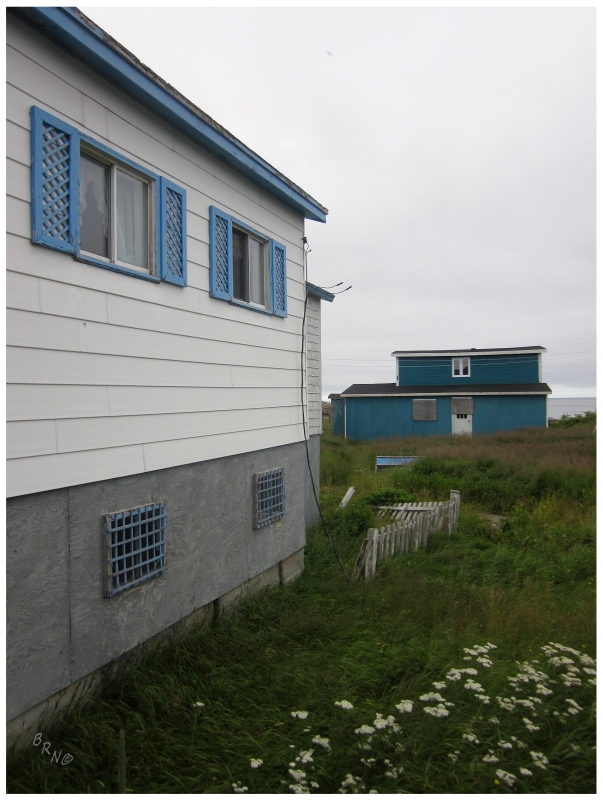
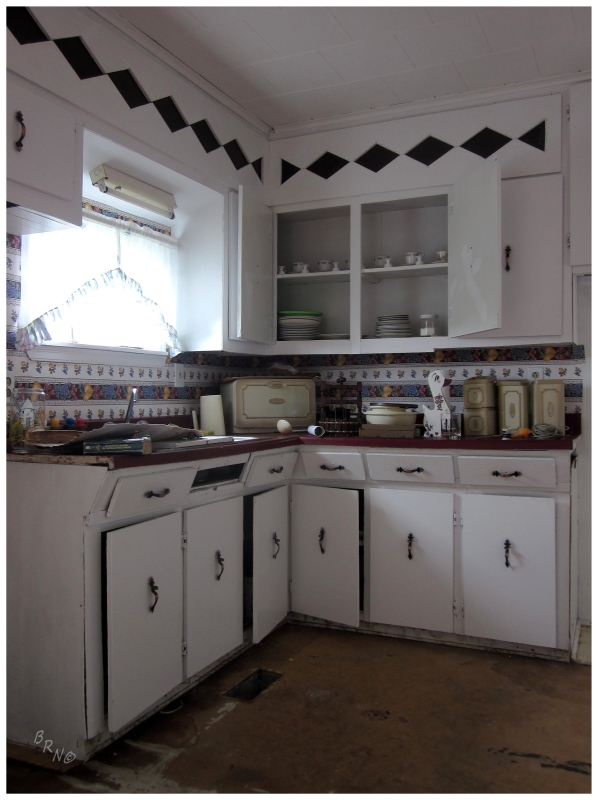
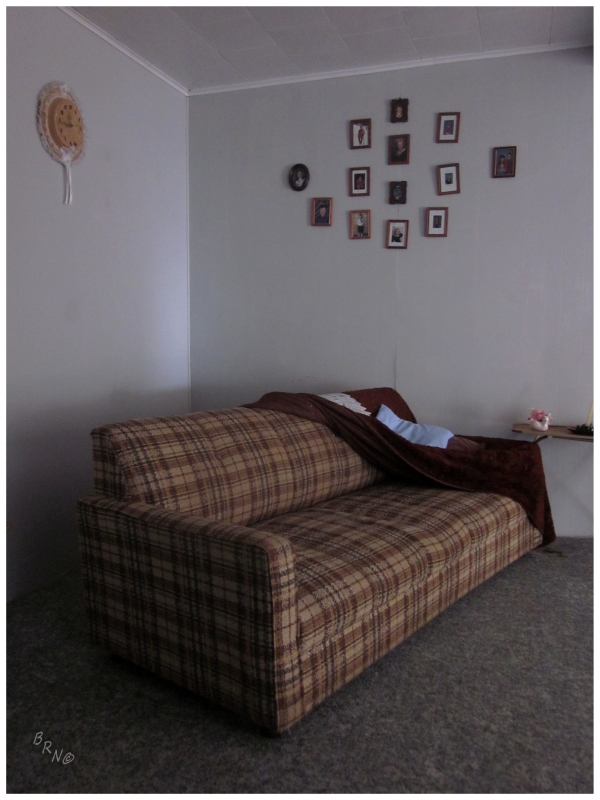
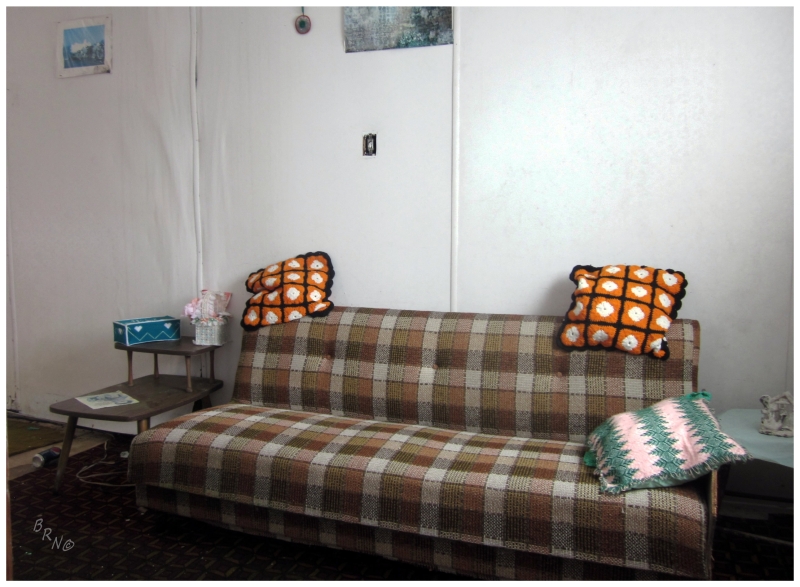
Other houses were quite pristine & safe. I was amazed at this fact because I'd have thought local kids would have been here & smashed everything by now. Maybe it's because too many people spend time here not leaving kids alone? Maybe the local Newfie kids aren't thoughtless assholes? Who knows.
Clearly we didn't have to bring our tents or sleeping mats though. I tell you what, if I was kayaking along this coast with a small 1-man tent, I'd love to stumble onto these plush couches.
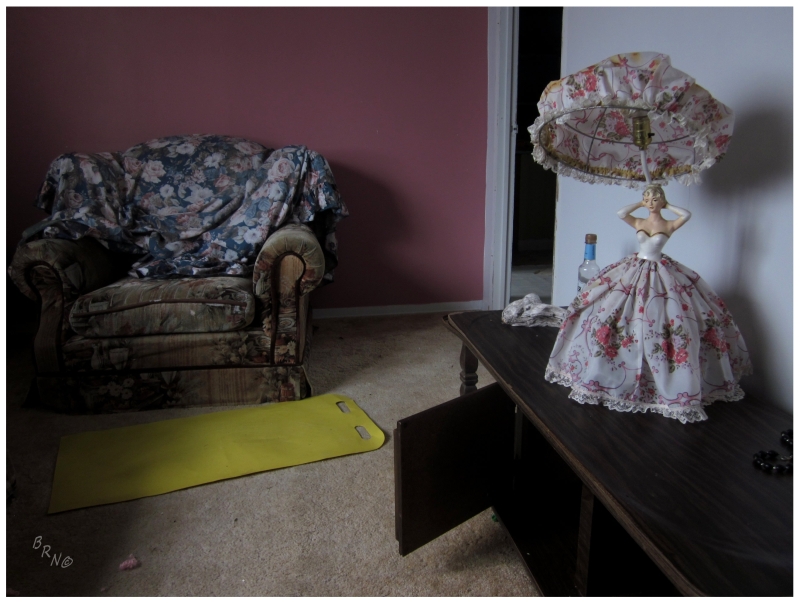
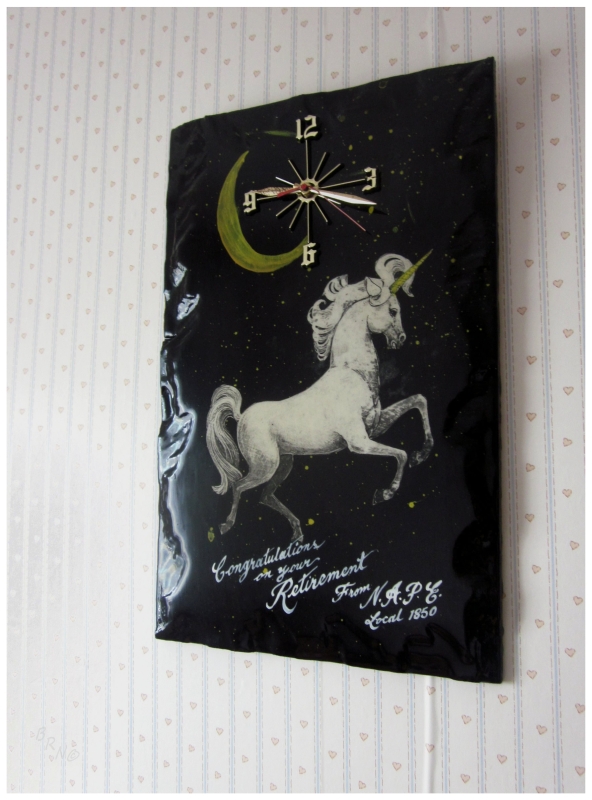
"Jim, it's been great to have you working here for the last 30 years. Please accept this unicorn clock as a small token of our appreciation!"

There was a really soggy & shifty house which I came to after already exploring 9 or 10 (houses).
The stairs were the definition of rickety, but since I have more enthusiasm than common sense, I went ahead...
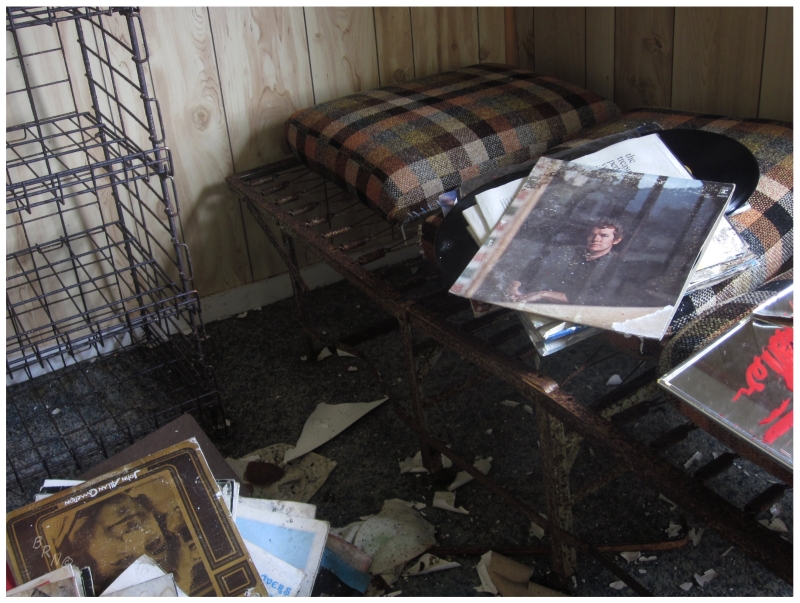
...and boy was I excited after I braved those rickety stairs! An abandoned copy of Gordon Lightfoot's If You Could Read My Mind!
Yesssss.


When I ran into Johan again, he was starting to set up his sleeping quarters in the old schoolhouse...which I quickly corrected & convinced him to move into the church instead.
There's an awesome old church in the community & we're going to sleep in the empty schoolhouse?!? (Johan did have a point about the church being rundown, but that's besides the point.)
As I followed him outside, it was funny to listen to him point out the highlights of the 10 houses to the east which he had been in...where we then turned, and I pointed at the houses to the west & what was worthwhile.
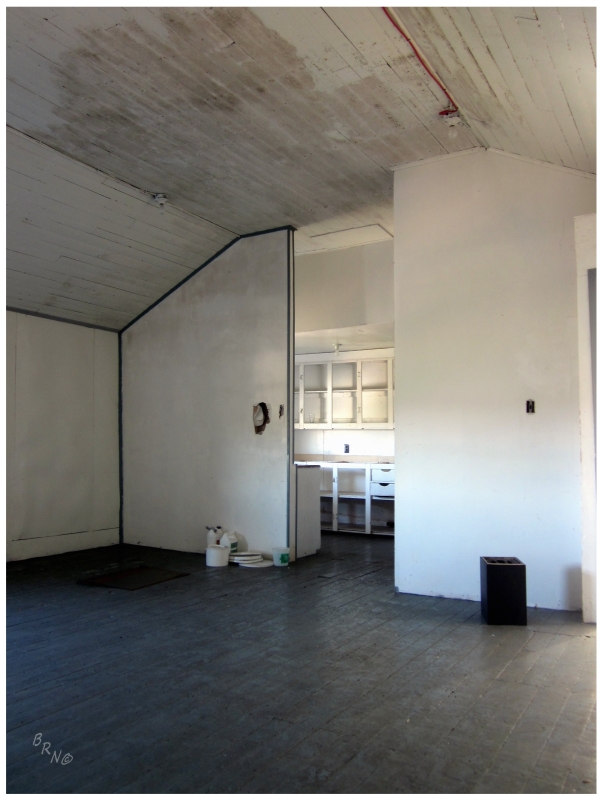
The area around the schoolhouse also had the church, fire hall & the Orange Lodge (the Orange Lodge is shown above).
(Orange Lodges (or LOL Lodges) are like Masonic Temples, but for the Orange Order: a Protestant fraternal organization that had power in Upper Canada & early Canada. I had never heard of them before moving to Newfoundland.)
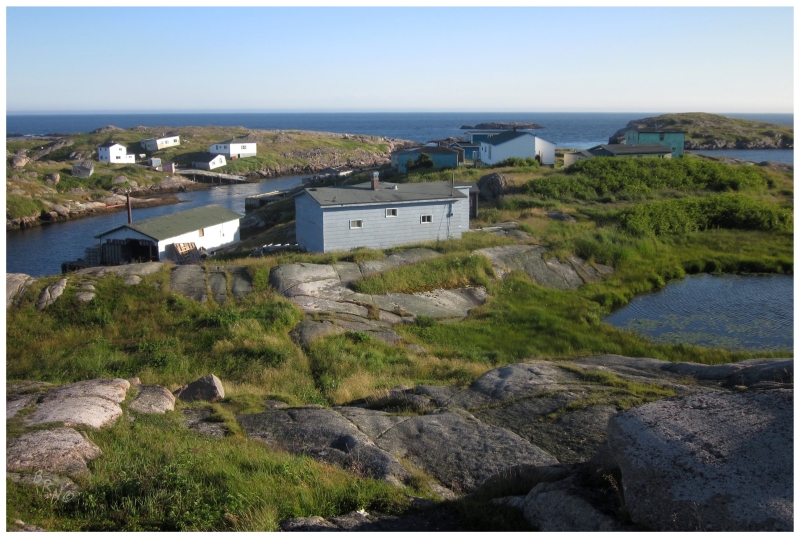
As the day crept towards the evening, I rounded the harbour towards the buildings on the other side. I had already exhausted 3 or 4 hours and was extremely happy that there was no rush to leave.
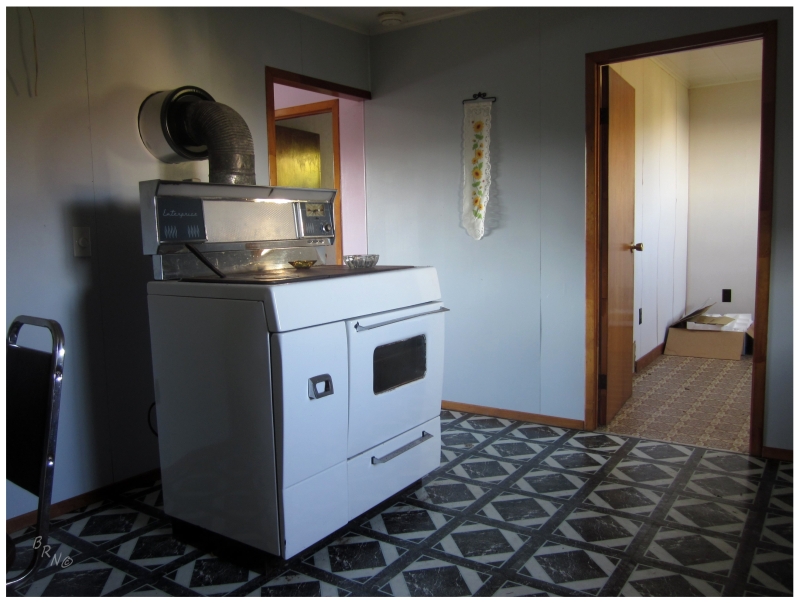
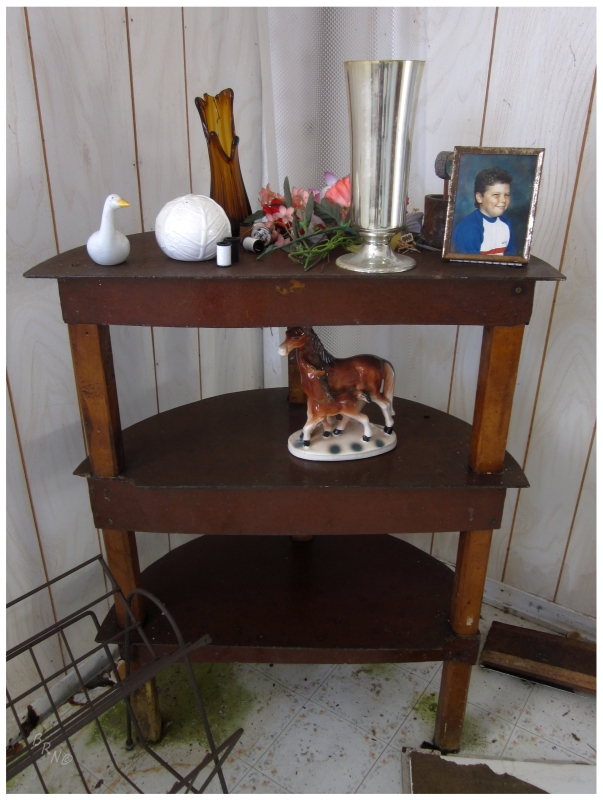
At the bottom of the harbour, there were a few houses which were so clean that they surely still see use, there were a few wide open, soggy structures & there were even a few well-maintained, locked houses.
One of them was awfully nice & I imagine that it had to be the house of the owner of the old trading company. I'm not much for isolation, so these places typically don't appeal to me very much; but this owner's house was nice enough to make me want it.

One of the houses was forgettable, except for the belowground carpentry garage. I pulled up the ring & noticed stairs descending - which I followed & discovered an awesome little workshop.
It was way too tight down there to get any pictures, but what you can see when the hatch opens, gives a good idea of what's below. I was again jealous...I'm not much for carpentry, but that would make a nice little area to work away during the winter.
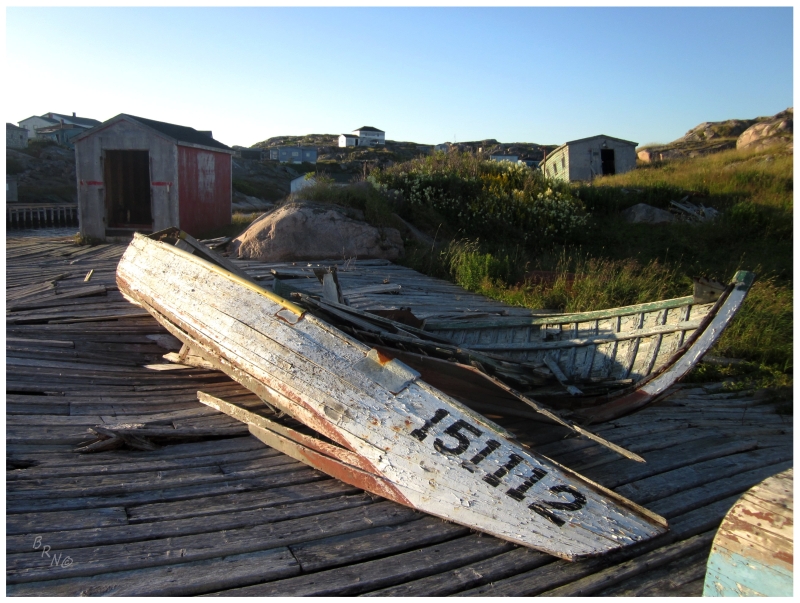
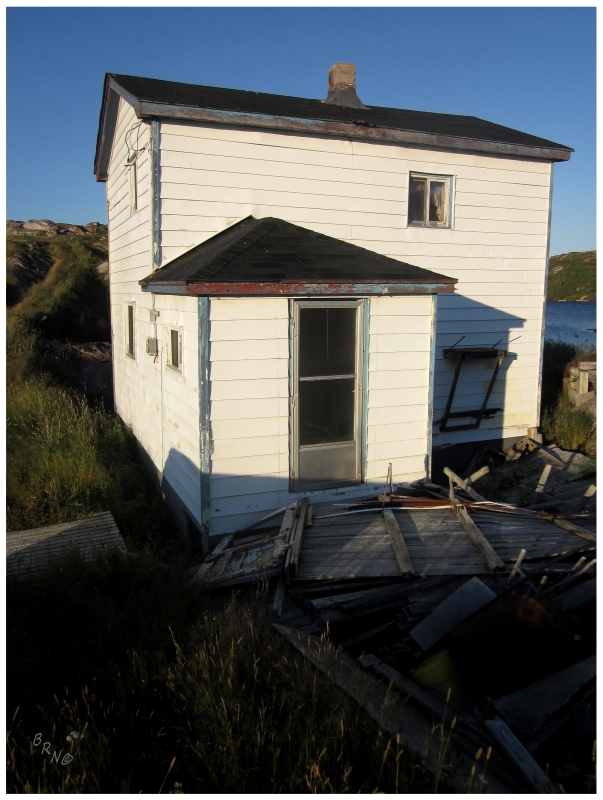
On the other side of the harbour, there was a boat ramp allowing the Petites residents to pull their vessels out of the water. The boat ramp had to be 20 feet wide and stood about 4 feet off of the ground. Time wasn't kind to it. The boards which didn't have support beneath, flexed and creaked under even 1/2 of my weight. There was no easy way around this giant boat ramp, so I carefully made my way across, making sure to step on the boards which had supports beneath.
As I approached the house in the above picture, I stepped forward to try the door & suddenly felt my foot go clean through the porch up to my thigh! I was suddenly in a weird planked position, with one leg fully stretched into the crevasse below, my toes sloshing in the water & muck, trying to get a foothold. I could feel no sudden pain, so I was more amused with the situation & my attempts at trying to free myself from this predicament.
I would get out of the hole & find no way into the house (the aluminum exterior door was nailed shut). I had a small cut on my leg which was more of a bloody show than anything serious. I was amused that I finally fell through something after all of these years of walking on rotting surfaces (this boat ramp did feel softer than Sidney Crosby though).
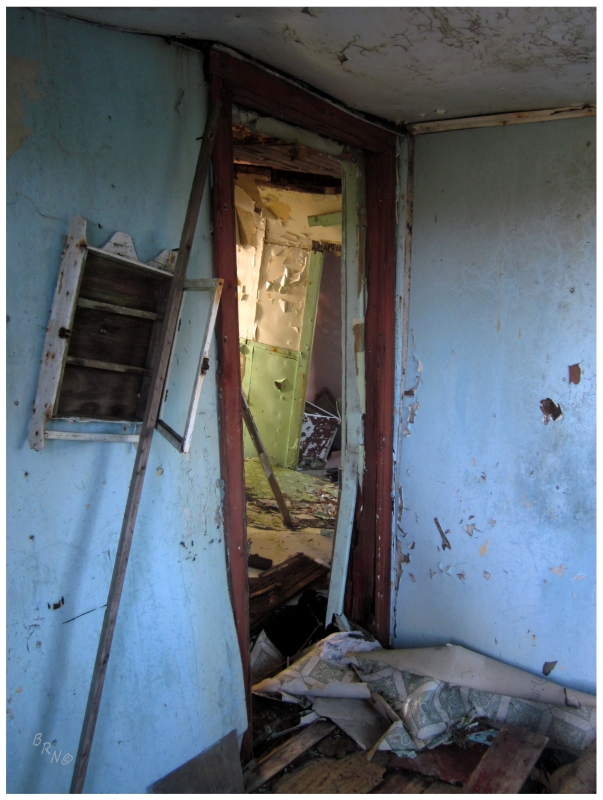
Moving past the boat ramp, there were 1 or 2 houses which were dilapidated enough to keep me from exploring much besides the kitchen/living room.
Also on this side of the harbour, I finally found a house which I couldn't even safely step inside.


I also found one of the more interesting houses with a stained glass door, a shelf of books & various dart trophies.
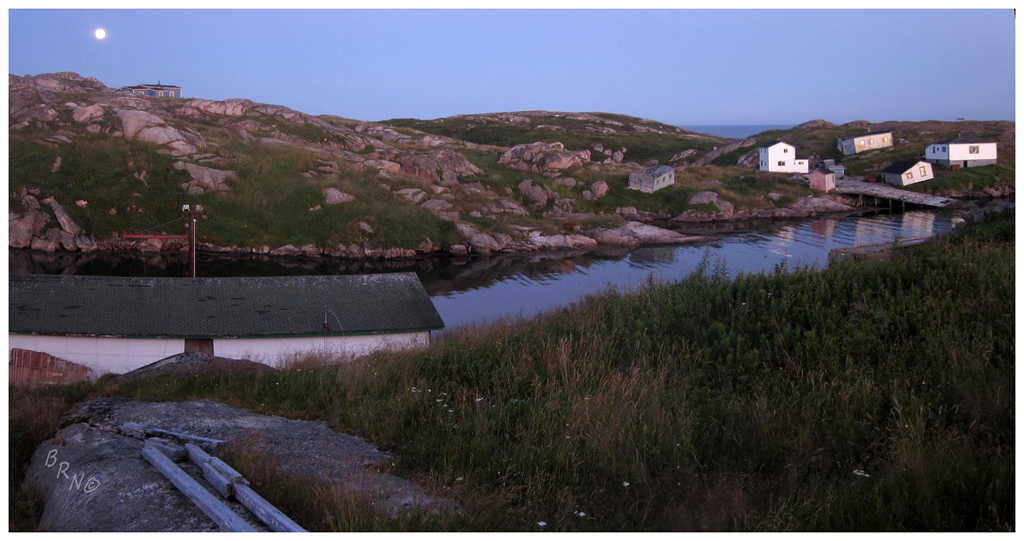
(^The boat ramp and the previous 4 houses from the 'other side of the harbour'.)

I ran into Johan & we stood outside shooting a couple of shots at dusk, but the mosquitoes quickly emerged & forced us into the 1830s church.
We ate some pop tarts, drank some water & were sleeping in no time. We had been drinking in town the night before until 7am, so after exploring 15 houses and 5 businesses as well, it wasn't a matter of Johan being restless on his church pew or myself being restless on the floor in front of the altar.

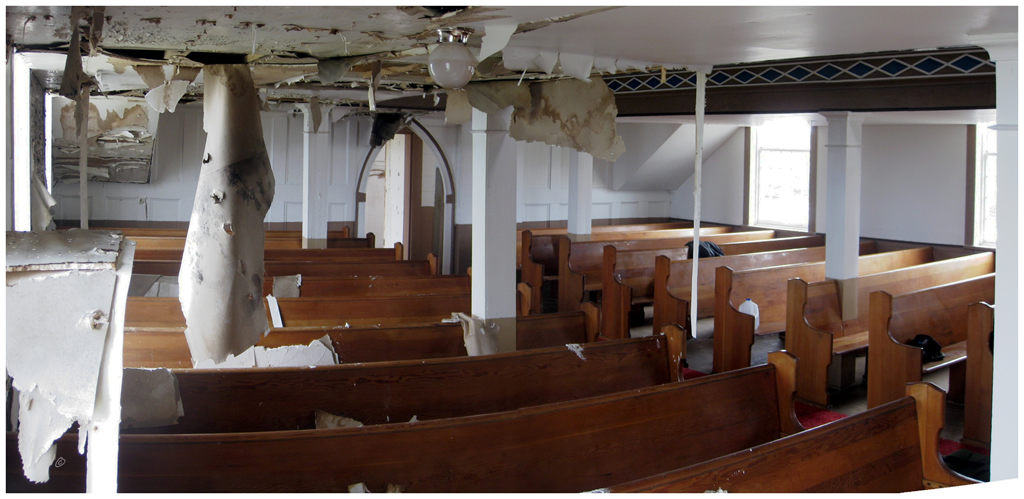
Waking the next day, I could really see how the plaster was failing inside the church. I realized why the fisherman said that he never comes up to the church anymore (it bothers him too much to see the nicest church on this coast of Newfoundland in such a run-down state).

Johan & I walked around & re-shot pictures to use up the morning hours. The fisherman was going out fishing & would pick us up around 11.
Once he arrived, he brought us out over a shipwreck & killed his engine so he could show us the rivets & metal pieces beneath us (I could barely see it with my eye, it would have never showed up in picture).
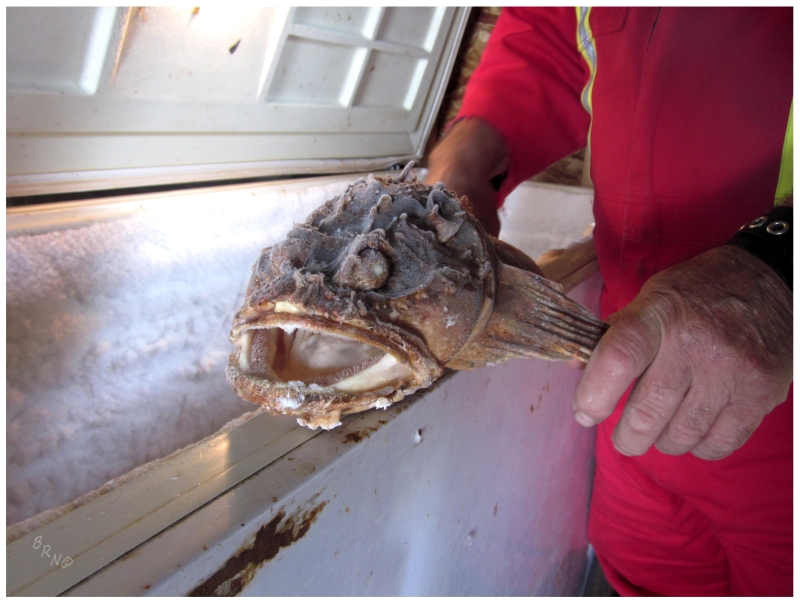
Afterwards, we made it back to town & thanked the fisherman profusely. He showed us his stage, we looked at a boat with his buddy & then we went on our way.